Wok cooking is a staple technique in many Asian cuisines, offering versatility, speed, and bold flavors in every dish. In this blog post, we dive deep into what wok cooking is, how to master it, and how to choose the right one for your kitchen.
It's not just for Asian cuisine.

You’ll find tips and techniques to enhance and refresh your cooking experience, from stir-frying to steaming. Plus, this is a live blog that I continuously update with the latest info, so be sure to subscribe to my newsletter to stay updated on this post and all the articles on Justmaikacooking.com!
Table of Contents
Jump to:
- 1. What is a Wok?
- 2. The Lingo
- 3. Common Accessories
- 4. Its Versatile Cooking Use
- 5. Healthy Quick Cooking Benefits
- 6. Essential Stir-Frying Tip
- 7. Oils Used in Stir-Frying (w/ Chart)
- 8. Adding Flavor
- 9. Wok Varieties (w/ Chart)
- 10. Size Matters
- 11. How to Well Ventilate
- 12. Recommended Books
- 13. Seasoning
- 15. Enhance the Seasoning
- 15. Recommended Recipes
- More Cooking Tips Articles
- Leave a Comment or Ask a Question

1. What is a Wok?
Woks are versatile cookware that have been essential to Chinese open-flame cooking for centuries. For one thing, they have a dome shape with the bottom either curved or flat. The rounded bottom and curved sides also help retain flavor and enable even heat distribution around the entire pan.

Looking for authentic Chinese recipes? Check out Omnivore's Cookbook and Greedy Girl Gourmet.
2. The Lingo
This brief glossary covers essential terms to help you understand the wok’s role in various cooking techniques and when reading text regarding them.
Wok Types
- Carbon Steel -A popular material used in creating them that is loved for its lightweight and fast heat conduction. But it requires seasoning and regular maintenance to prevent rust.
- Cast Iron - A heavier material for them that retains heat longer. The cast iron ones are more durable but take longer to heat up and require thorough seasoning to maintain.
- Flat-Bottomed - It's designed for electric stoves or flat cooktops. It offers less even heat distribution compared to round-bottomed ones, but is more versatile for modern kitchens.
Round-Bottomed - A more traditional shape designed to sit on a wok ring over a gas burner, allowing food to be quickly tossed and cooked evenly.
Accessories
- Ladle - A tool often used in wok cooking to toss food and distribute sauces, especially during stir-frying.
- Wok Ring - A metal ring that stabilizes a round-bottomed wok on a flat stovetop or burner, helping distribute heat evenly across its surface.
- Wok Spatula - A specialized spatula with a curved edge designed to match the shape of the wok, perfect for scooping, tossing, and stirring ingredients.
Techniques
- Seasoning -The process of creating a non-stick surface on a wok by repeatedly heating and coating it with oil. This builds a protective layer and enhances flavor during cooking.
- Smoking Point - The temperature at which oil starts to smoke. For seasoning, it’s important to use oils with a high smoking point, like vegetable oil or flaxseed oil.
- Stir-Frying - A quick cooking method commonly used with a wok, where ingredients are rapidly tossed over high heat to retain their texture, color, and nutrients.
- Wok Hei - A Cantonese term meaning “breath of the wok,” referring to the smoky, charred flavor achieved by cooking food at high heat in a well-seasoned wok.
- Velveting - A technique often used in Chinese cooking where meat is marinated in cornstarch and oil, then briefly stir-fried to retain its moisture and tenderness.
3. Common Accessories
These accessories help enhance your wok cooking experience by making preparing and handling food easier! Here’s a list of common accessories:
Utensils
Wok Spatula / Turner

The wok spatula is a wide, curved spatula designed to fit the shape of the wok, making it easier to toss and stir ingredients.
Ladle

This ladle is a deep spoon used for scooping sauces, soups, or tossing stir-fried ingredients.
Spider Strainer

A metal or bamboo strainer with a wide, flat basket, perfect for lifting fried or blanched foods from hot oil or water.
Wok Brush
Source: Amazon
A specialized bamboo brush is used to clean a wok without soap, preserving its seasoning. However, I prefer the dish brush.
Other Accessories
A domed or flat cover used to trap heat and steam for faster cooking and braising. I have both. I also use the flat one for my cast iron skillet.
Bamboo Steamer Sizes
A bamboo steamer is basically a multi-tiered steamer that can be placed inside a wok for steaming vegetables, dumplings, or fish.
- 6-Inch - Perfect for small servings or individual portions of dumplings, buns, or dim sum. Ideal for steaming a small side dish or personal meal.
- 8-Inch - Commonly used for steaming small to medium quantities of vegetables, dumplings, or seafood. Great for single servings or couples, and fits standard household pots.
- 10-Inch - Suitable for larger portions or steaming multiple small items at once. Great for family-sized servings of buns, fish, or vegetables. Fits well over medium to large pots.
- 12-Inch - Best for steaming large quantities or bulk items, such as a whole fish, multiple layers of dumplings, or large batches of vegetables. Often used for meal prepping or feeding a group.
- 14-Inch - Ideal for restaurant use or large gatherings. It allows you to steam large quantities of food at once, including full meals with multiple layers of ingredients, like fish, vegetables, and buns.
I own both the 6 and 14-inch steamers. The 6-inch steamer is also great for giving over small pots.
Bamboo Steamer Accessories
- Bamboo Steamer Liners are an accessory that can be added to bamboo steamers to keep them clean and prevent sticking when cooking dumplings, while allowing steam to circulate freely for uniform cooking. Several to Choose From:
- Mesh- I prefer these since they allow a better distribution of steam. I found these silicone ones, they are great for reducing waste since they are usually disposable.
- Unbleached Parchment Liners - These are disposable sheets of round parchment paper that are not bleached and have uniformly spaced holes to allow steam to come through.
- Parchment Liners - These are the common parchment perforated sheets.
- The Steamer Ring is great for allowing steam to escape. This also helps stabilize the bamboo steamer and ensures it sits properly above the boiling water without tipping, allowing steam to rise and cook the food evenly.
Wok Ring
Source: Amazon
A metal ring that stabilizes round-bottomed woks on flat stovetops, ensuring even heat distribution.
4. Its Versatile Cooking Use
From professional chefs to home cooks, woks continue to be a go-to tool for creating amazing dishes, with new ways to use them popping up all the time. They’re perfect for stir-frying vegetables, deep-frying battered meats and fish, and so much more. They offer the versatility needed for a busy lifestyle, making them a great choice for home kitchens.
With a wok, you can stir-fry, steam, boil, deep-fry, and pan-fry your food all in one place. The best part? Since it’s multifunctional, there’s less cleanup—no need to clutter your kitchen with multiple pans and utensils!
5. Healthy Quick Cooking Benefits
Because woks use high heat and little oil for stir-frying, vegetables are cooked to their optimum level quickly, keeping them crisp with their bright colors. This cooking style also relies heavily on fresh ingredients and bold flavors, so having the right equipment is vital to achieving perfectly balanced dishes.
Thus helping to create healthy cooking habits involving cooking more vegetables with less oil.
6. Essential Stir-Frying Tip
These are the essential tips for ensuring success when stir-frying, from properly prepping your ingredients to choosing the right oil with a high smoke point. Following these steps will help you achieve evenly cooked, flavorful dishes while avoiding common mistakes like burning or overcooking.
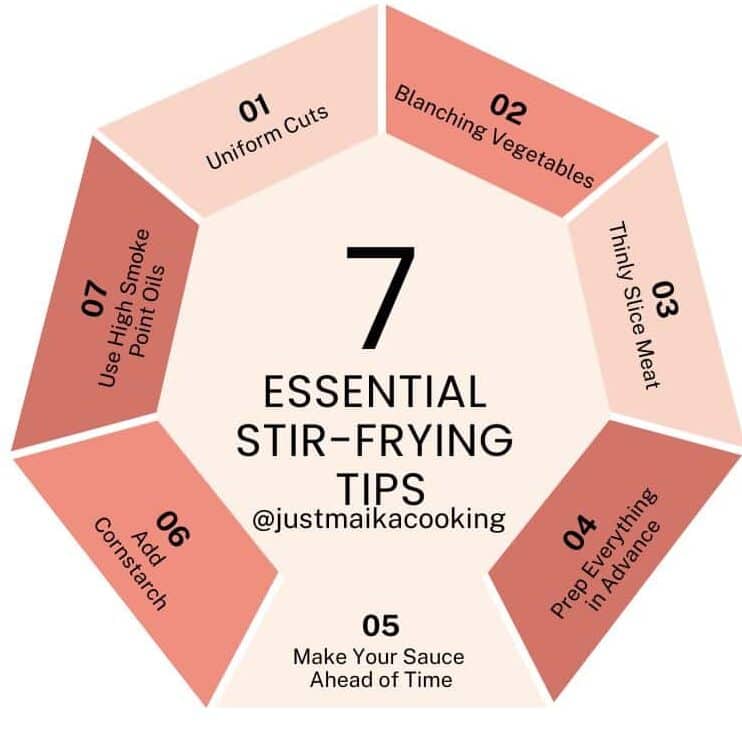
7 Stir-Frying Tips
- Uniform Cuts
- Cut your vegetables and meat evenly to ensure they cook at the same rate.
- Blanching Vegetables
- Some vegetables may require blanching before stir-frying.
- What is Blanching? This is when you boil or steam, then place it in an ice bath to stop cooking and preserve the bright colors.
- Thinly Slice Meat
- Slice meat thinly for quick and even cooking in the high heat of stir-frying.
- Prep Everything in Advance
- Have all ingredients prepped and within reach.
- Stir-frying is fast and high-heat; you don’t want your sauce to dry out or ingredients to burn. Subscribe to learn more ways to save time in the kitchen.
- Make Your Sauce Ahead of Time
- Combine sauce ingredients in a bowl or measuring cup beforehand.
- This ensures the sauce doesn’t dry out when added at the end, and your veggies don’t overcook.
- Sauces and Cornstarch
- Some Chinese stir-fry sauces include cornstarch to thicken quickly at the end.
- Other dishes, like Thai meals, don’t use cornstarch—so no chopsticks needed! Use a spoon and fork to eat. Learned that from Hot Thai Kitchen!
- Use High Smoke Point Oils
- Opt for oils with a high smoke point, like avocado, peanut, or vegetable oil.
- Pro Tip: Avocado oil is my go-to pantry oil for excellent high heat tolerance.
7. Oils Used in Stir-Frying (w/ Chart)
I usually use avocado oil for stirfrying due to its high smoke point and neutral taste; it won’t change the dish's flavor. You can also use canola oil or peanut oil. Why is sesame not a stir-frying oil? Because toasted sesame oil is added at the end of a cooked dish to add a finishing taste.
Additionally, don’t use olive oil, especially extra virgin olive oil, due to its low smoke point. For example, it cannot tolerate high-heat cooking, eventually causing smoking, and it has a distinct flavor that can overpower your dish.
Which oil is best for you?
You can easily customize your wok cooking experience by choosing the oil that best suits your taste and cooking style, whether it’s a neutral oil for high-heat stir-fries or a flavorful option like sesame to enhance your dish.
| Oil Type | Pros | Cons | Best Use | Smoke Point |
|---|---|---|---|---|
| Peanut Oil | High smoke point, neutral flavor, good for high-heat cooking. | Allergen for some, more expensive than other oils. | Stir-frying, deep frying, high-heat wok cooking. | 450°F (232°C) |
| Canola Oil | High smoke point, affordable, neutral flavor, widely available. | Low in flavor, processed oil. | Everyday stir-frying, general high-heat cooking. | 400°F (204°C) |
| Vegetable Oil | Affordable, widely available, neutral flavor, good for high heat. | May be heavily processed, lower in nutrients compared to other oils. | Stir-frying, deep frying, general wok cooking. | 400-450°F (204-232°C) |
| Soybean Oil | High smoke point, neutral flavor, affordable. | Highly processed, may contain GMOs. | Stir-frying, general wok cooking, frying. | 450°F (232°C) |
| Sesame Oil (Toasted) | Rich, nutty flavor, adds great aroma to dishes, finishing oil. | Low smoke point, not ideal for high-heat cooking, more expensive. | Finishing touch for stir-fries, marinades, sauces. | 350°F (177°C) |
| Avocado Oil | Very high smoke point, healthy fats, neutral flavor, minimally processed. | More expensive than other oils. | High-heat stir-frying, general wok cooking, sautéing. | 520°F (271°C) |
| Coconut Oil | Healthy fats, adds a subtle coconut flavor, good for medium-high heat. | Lower smoke point, strong flavor can overpower dishes. | Medium-heat wok cooking, sautéing, frying certain dishes. | 350°F (177°C) |
8. Adding Flavor
In Cantonese cooking, woks give a specific flavor to food, termed “Wok Hei,” translating to “air of the wok,” where the open flame interacts with the food, like grilled or broiled dishes.
Even when I use it on my electric stove top, I still get the wok flavor compared to a non-stick frying pan because of the high heat, searing, and quick cooking process. When making stir-fries as well, I especially use mine or cast-iron pan to give it that unique flavor.
9. Wok Varieties (w/ Chart)
I primarily use a carbon steel wok, but I also have a cast iron one. The cast iron one, while heavier, offers excellent heat induction and even distribution, making it ideal for certain dishes.
On the other hand, the carbon steel wok is lightweight, perfect for stir-frying and deep frying, and doesn’t rust. You might come across non-stick woks, but they’re not suitable for high heat.
The truth is, any of them can become non-stick with proper seasoning. Most them come with instructions on how to season them, which typically involves heating the pan and applying oil in layers, similar to seasoning cast iron. It’s normal for it to change color as it seasons, so don’t worry if you see that happening!
Cast Iron vs. Carbon Steel Woks
1. Material Difference
- Cast Iron - Heavier and retains heat longer but can take longer to heat up.
- Carbon Steel - Lighter and heats up quickly but cools down faster. More responsive to heat changes.
2. Seasoning Process
- Cast Iron - Requires a more thorough seasoning process due to its porous nature. You may need to repeat the seasoning cycle more times than for carbon steel. Additionally, cast iron benefits from an initial oven-baked seasoning to fully penetrate the metal.
- Carbon Steel - Slightly easier to season due to the smoother surface. You can achieve good seasoning with just a stovetop method, though some prefer to use the oven as well.
3. Heat Responsiveness
- Cast Iron holds onto heat longer, which is great for dishes that need sustained high temperatures.
- Carbon Steel is more responsive to changes in heat, making it ideal for quick stir-frying.
What is the Right One for You?
Explore the chart below to find the perfect wok that suits your cooking style and kitchen needs!
| Wok Type | Pros | Cons | Best For | Care |
|---|---|---|---|---|
| Carbon Steel | Lightweight, heats up quickly, excellent heat retention, develops a non-stick patina over time. | Requires seasoning, prone to rust if not properly maintained, may warp over high heat. | Stir-frying, high-heat cooking, versatile use. | Hand wash, dry immediately, and oil to prevent rust. Needs regular seasoning. |
| Stainless Steel | Non-reactive to acidic foods, durable, rust-resistant, easy to clean. | Heavier, slower to heat up, doesn’t retain heat as well as carbon steel. | Everyday cooking, non-reactive for acidic dishes like tomato-based stir-fries. | Dishwasher-safe but hand washing is preferred to avoid damage. |
| Nonstick | Easy to clean, doesn’t require seasoning, food doesn’t stick. | Cannot withstand high heat, coating may wear over time, not ideal for developing wok hei (charred flavor). | Low-heat cooking, beginner-friendly, easy cleanup. | Hand wash with soft sponges, avoid metal utensils to protect coating. |
| Cast Iron | Excellent heat retention, great for slow cooking, durable and long-lasting, develops a non-stick surface. | Heavy, takes longer to heat up, requires seasoning, prone to rust if not maintained. | Slow cooking, deep frying, stewing, and stir-frying at lower temperatures. | Hand wash, dry immediately, and oil to prevent rust. Regular seasoning required. |
10. Size Matters
I have a large, heavy cast iron wok, which is excellent when making big serving-size recipes and a great show for guests on my grill stove. But I use a smaller, more personal 12-inch carbon steel one on my stove top since it’s lightweight and small enough to store without worrying about rusting.
So it depends on what you plan to use them for. Some of them can also be used for braised meats, roasts, etc. Additionally, I suggest using a cast iron wok if you plan to make recipes involving these techniques.
Also, remember not to overcrowd them, whatever size you have when stir-frying; you will notice that I usually stir-fry one to two items at a time because you don’t want to end up steaming your ingredients.

Watch: Gochujang Chicken Stir Fry
11. How to Well Ventilate
Learn how to ventilate your kitchen when using a wok since high temperatures with oils may create some smoke:
- Open kitchen windows and turn on the stove or ceiling fan.
- Prepare the rest of the house by closing other rooms’ doors to prevent smoky or intense food smells from resinating.
- If the recipe calls for certain chili peppers, the pepper oils may be released into the air; an open window can help that air escape.
- Take it outside: Woks are perfect for open-flame cooking. If you have a grill with a burner, you can try making my recipes that use them outside using a cast-iron pan.
12. Recommended Books
If you're eager to dive deeper into the art of wok cooking, here are five must-read books that will teach you essential techniques, recipes, and tips to master the wok.

Top 6 Books:
- The Breath of a Wok by Grace Young
- Contains detailed techniques, approachable recipes, and insightful tips, making mastering wok cooking both fun and accessible for cooks at all levels.
- Stir-Frying to the Sky’s Edge by Grace Young
- Delivers rich storytelling, authentic recipes, and expert techniques that make stir-frying accessible and enjoyable, helping home cooks bring the vibrant flavors of Chinese cuisine to their kitchens.
- The Wok: Recipes and Techniques by J. Kenji López-Alt
- I love this book for its in-depth exploration of wok cooking, combining science-backed techniques with easy-to-follow recipes, making it a go-to resource for both beginners and experienced cooks.
- The Food of Sichuan by Fuchsia Dunlop
- Another favorite: Superb for its authentic, flavorful recipes and deep dive into Sichuan cuisine, offering a perfect balance of cultural insight and practical cooking techniques that bring the bold, spicy flavors of Sichuan to life.
- Every Grain of Rice: Simple Chinese Home Cooking by Fuchsia Dunlop
- Has approachable recipes and an emphasis on simple, healthy Chinese home cooking, making it easy for anyone to recreate authentic, delicious dishes with everyday ingredients.
- The Woks of Life Cookbook by Bill, Judy, Sarah & Kaitlin Leung
- From one of my favorite food bloggers. I love it for its heartfelt family stories, diverse collection of Chinese-American recipes, and practical cooking tips, making it a go-to guide for home cooks looking to master both traditional and modern Chinese cuisine.
Do You Own Any of These Books?
Give your insights to share with the rest of the food enthusiast community.
13. Seasoning
To season a wok, heat it up, wipe it with a thin layer of oil, and repeat the process a few times until the surface is nice and glossy. Whether it's cast iron or carbon steel, this method locks in a perfect non-stick coating. Follow the instructions below:

Materials Needed:
- Wok (cast iron or carbon steel)
- Neutral oil (high smoke point, like vegetable, canola, or flaxseed oil)
- Bandana, Paper towels, or a lint-free cloth
- TongsStove (gas burner preferred)
- Heat-safe gloves or oven mitts
Step-by-Step Instructions
1. Clean It
- New - If you're new, it might come with a factory coating to prevent rust. Scrub it off using hot water, dish soap, and a stainless steel scrubber. Rinse and dry completely. Usually, they will come with instructions.
- Used - If it's a used one, ensure it's clean and free of any food residue or rust before seasoning.
2. Heat It
- Place the wok on high heat and allow it to heat until it starts to smoke. This opens the pores of the metal, preparing it for seasoning.
3. Apply Oil
- With tongs or a heat-safe glove, hold a paper towel dipped in oil, and carefully wipe the inside. Ensure you coat the entire surface thinly.
- ⚠️ Note: Avoid using too much oil. A thin layer is key to building up seasoning layers.
4. Heat It Again
- Continue heating the wok on high until the oil starts to smoke. This will help polymerize the oil, bonding it to the metal.
- You may notice it changing color to a blue or dark brown hue—this is normal and indicates proper seasoning.
5. Repeat the Process
- Repeat the oiling and heating process 2-3 times. Each time you apply oil, be sure it's a very thin layer. This helps create a non-stick surface without sticky buildup.
6. Cool Down
- Once you’ve finished the seasoning process, let the wok cool down naturally. It is now seasoned and ready to be used.
15. Enhance the Seasoning
To make your wok naturally non-stick, start by heating it up dry, then add a bit of oil and let that heat up, too. Doing this opens up the pores of the metal, letting the oil seep in and create a thin, protective layer that stops food from sticking.
It’s almost like building a natural coating that gets better each time you use it—especially if you skip the harsh soaps and just rinse with hot water and a gentle scrub. This technique is key for stir-frying since it keeps ingredients moving smoothly over high heat.
Go to YouTube to watch my Spicy Noodle Soup done in a wok.
15. Recommended Recipes
Looking for your next stir-fry meal? Try these:
- Bold and Spicy Caribbean Beef Noodle Soup Recipe Twist
- Healthy Haitian-Style Creole Spicy Shrimp Pasta
- Fresh Hoisin Mushrooms Noodle Bowl with Spicy Peanut Sauce
- Chicken Stir-Fry with Mushrooms, Peppers, and Green Beans in Hoisin Sauce
More Cooking Tips Articles
Keep expanding your cooking knowledge and sharpening your skills by exploring one of the articles below!
Leave a Comment or Ask a Question
I'd love to hear your thoughts, questions, or experiences with using the wok and techniques—leave a comment or question and get a response from a professionally trained chef!


Chef Maika Frederic
Chef and Educator
Haitian-American chef and educator Maika Frederic blends bold flavors with approachable recipes. With a background in both professional kitchens, classrooms, and children therapy—as a trained chef, former teacher and technician—she brings a thoughtful, inclusive touch to every dish. Through her platform, Just Maika Cooking, she shares diverse meals and practical tips to empower home cooks of all ages and levels.

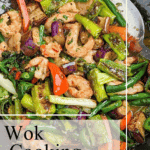








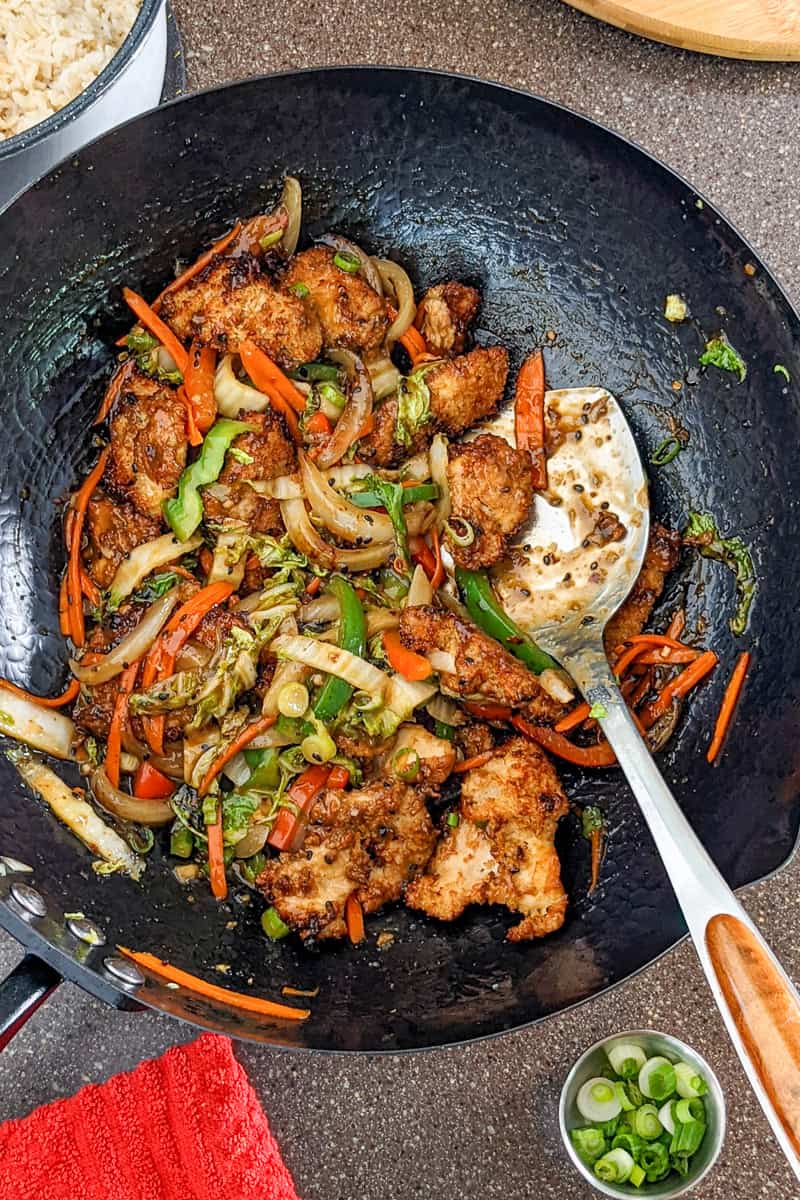
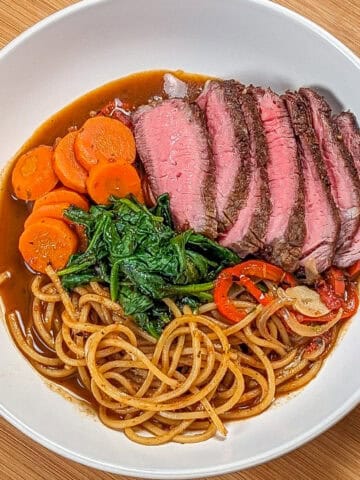

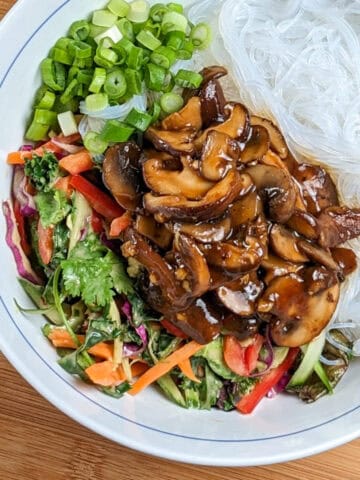
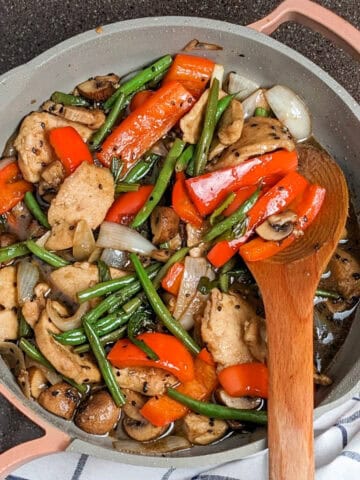
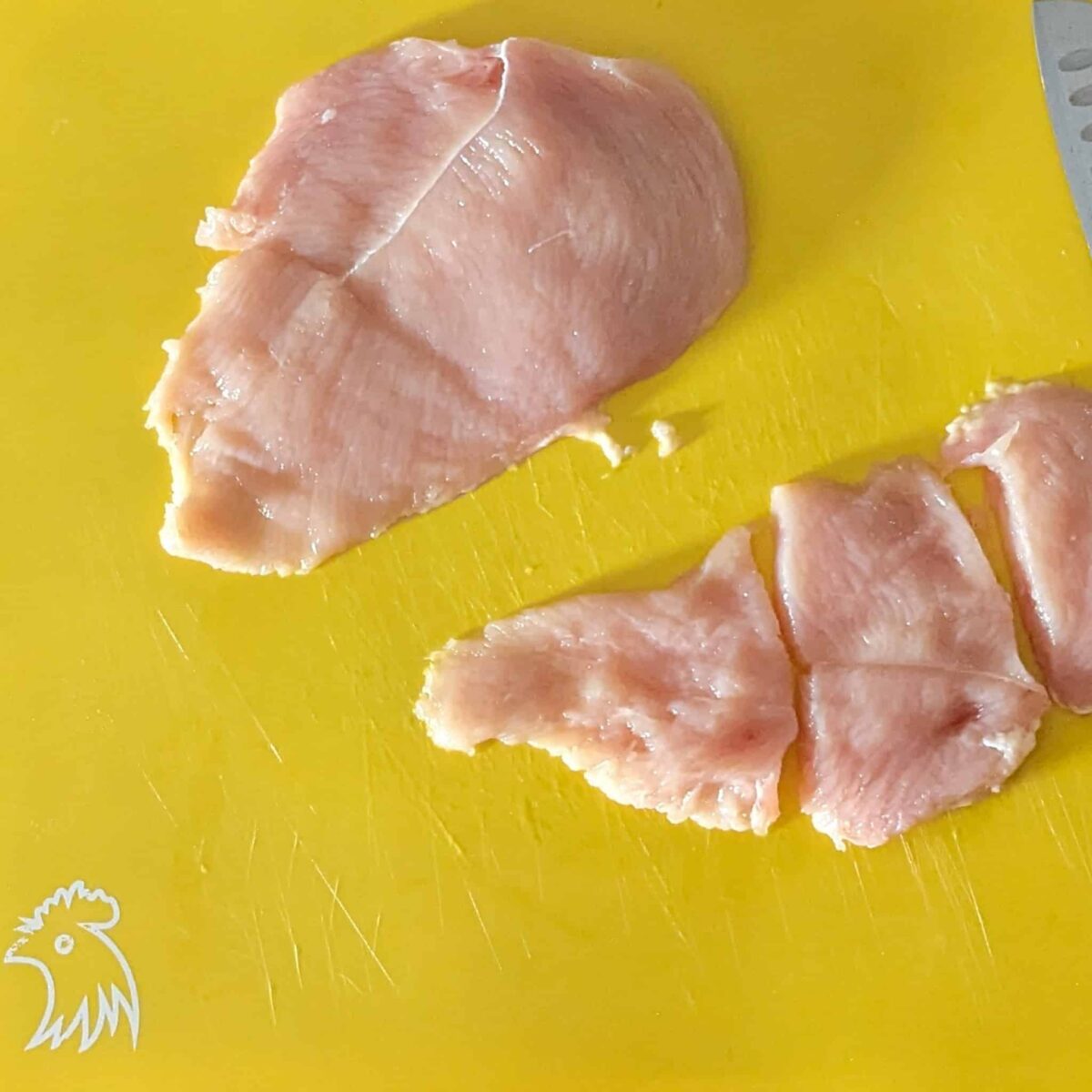
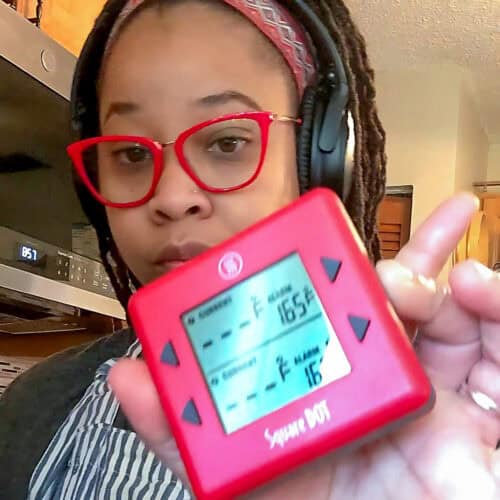
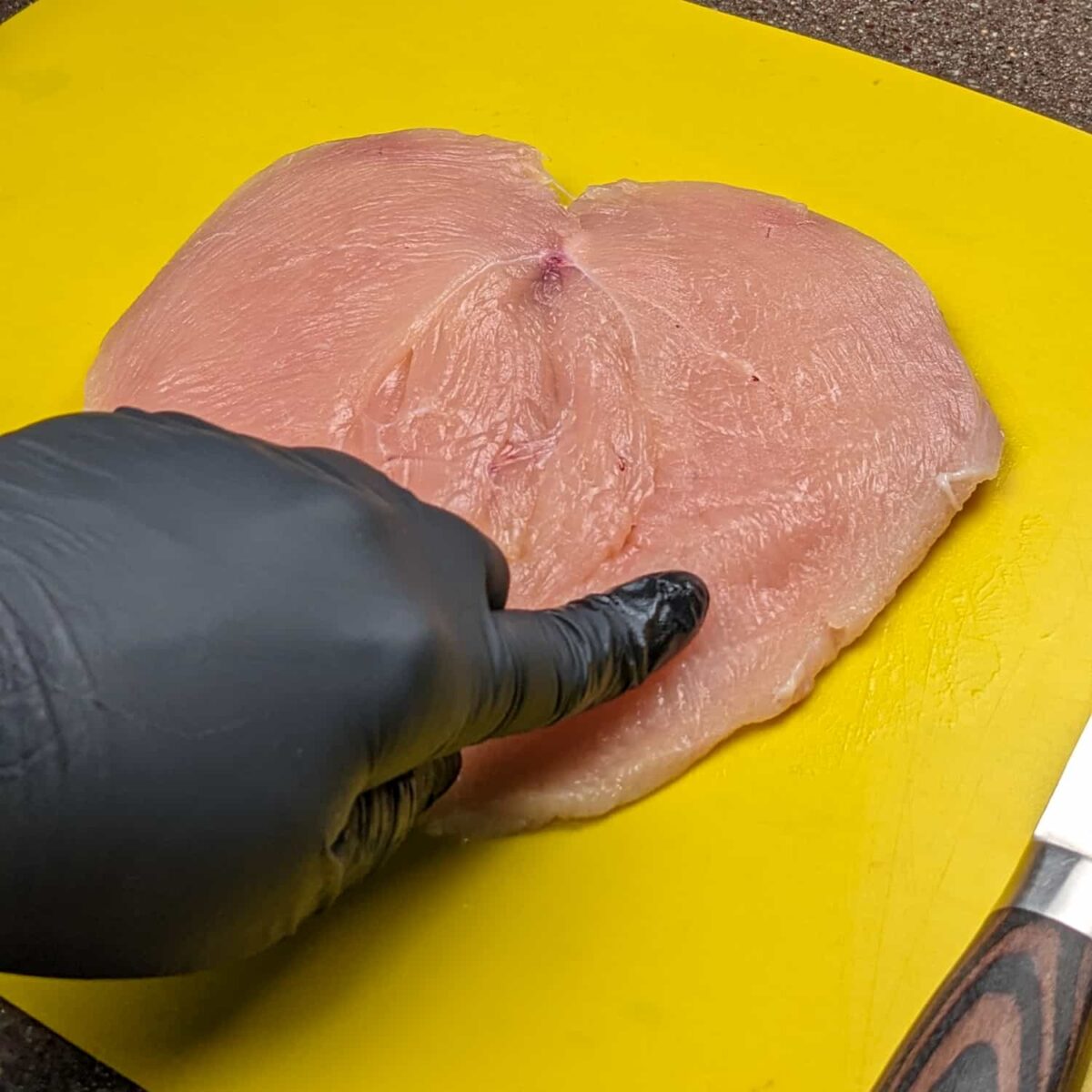
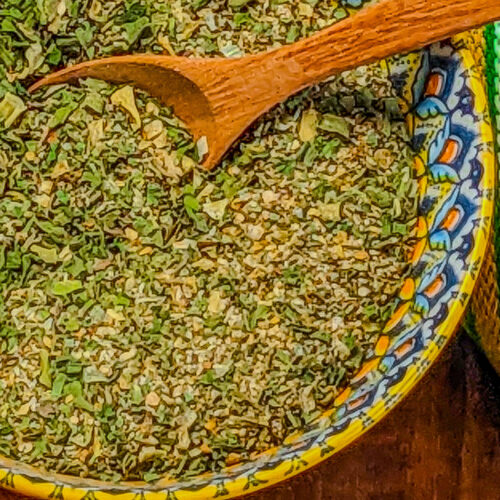

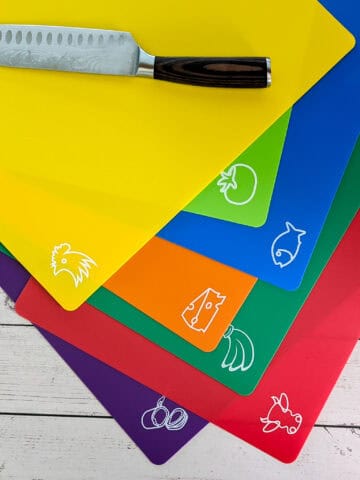
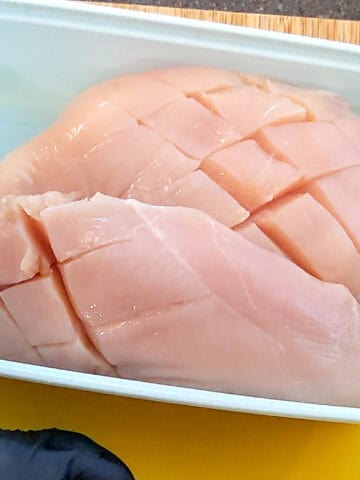
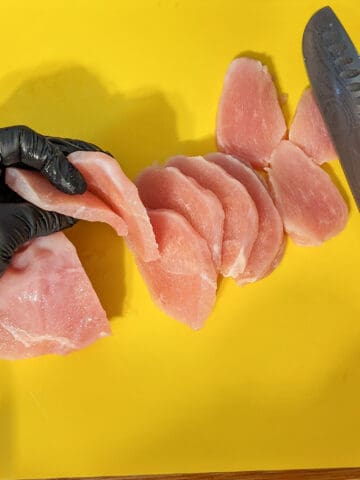
Leave a Reply